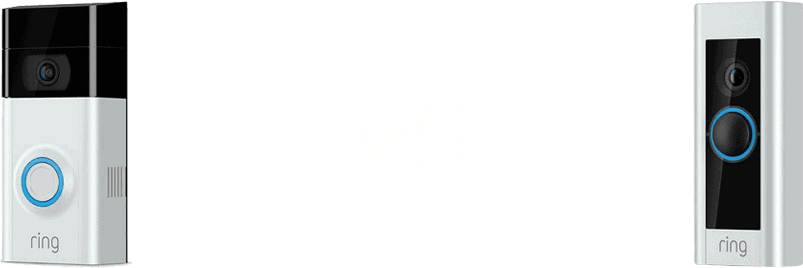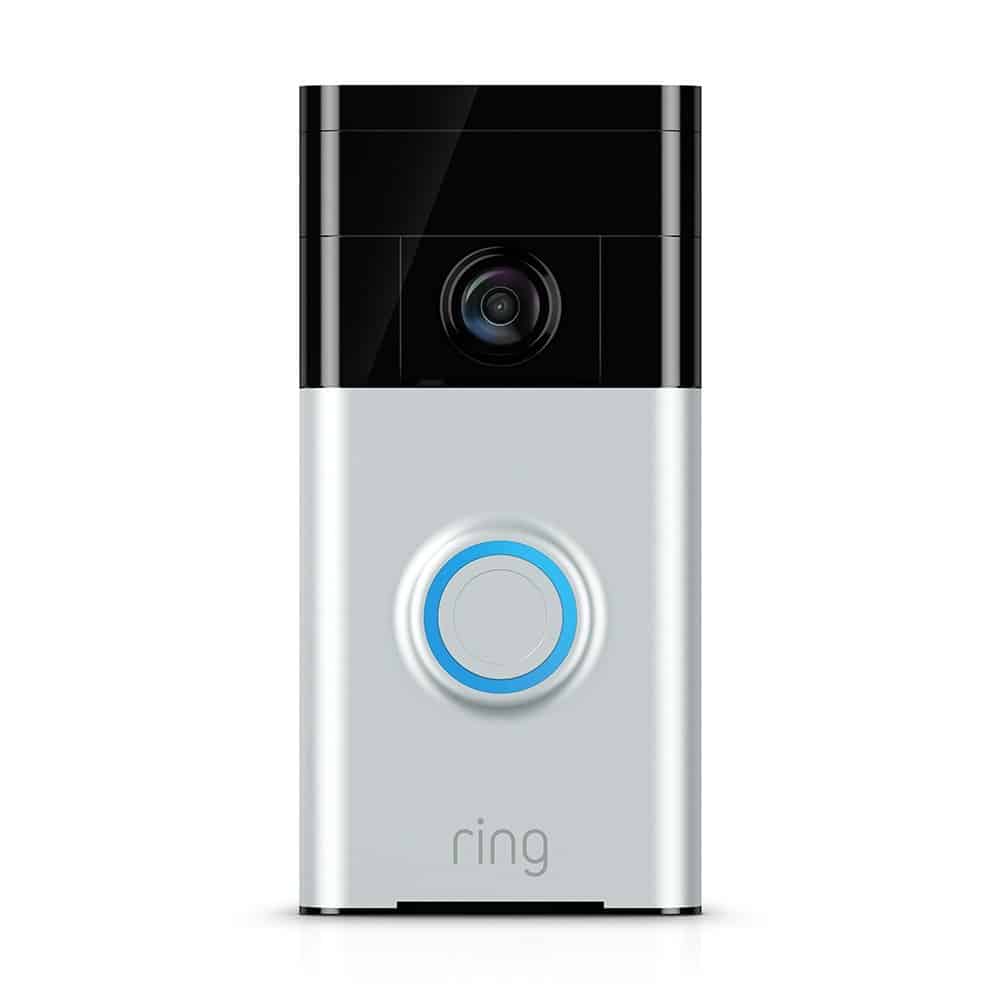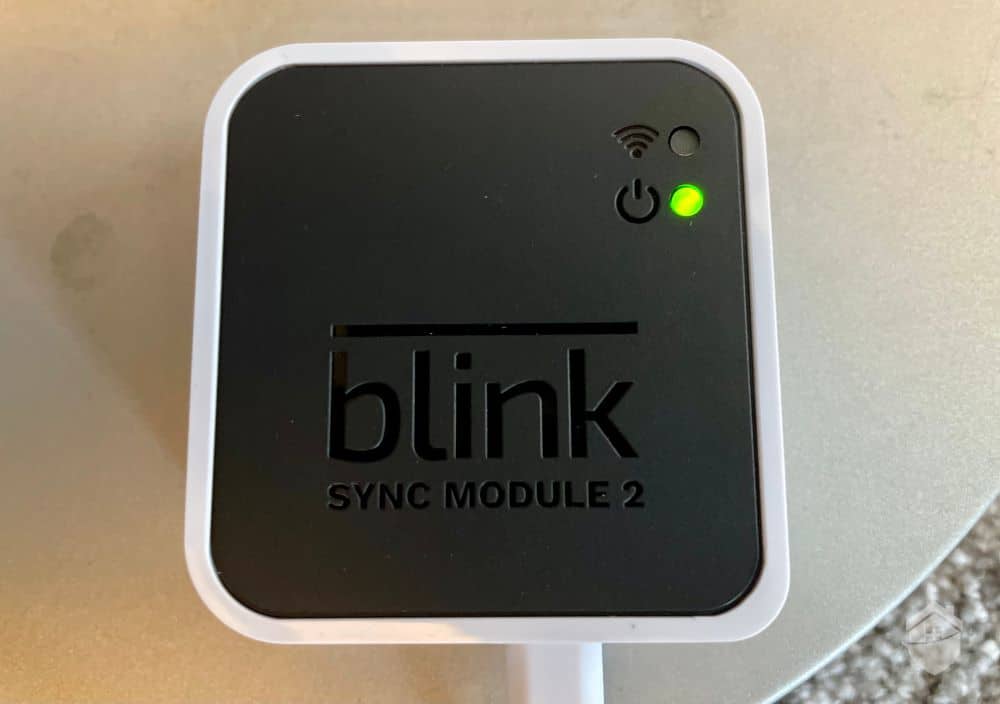Ring offers one of the biggest selections of video doorbells in the industry, and it’s clear to see why — they basically pioneered the technology. That said, it’s no easy task deciding between all of its various products, especially given that different models often come with very different features.
- The Ring Video Doorbell and Ring Plus offer similar basic features, including motion alerts, two-way talk, and night vision.
- The price disparity isn’t big; Ring Video Doorbell costs between $49.99 and $99.00 depending on whether you choose the wired or wireless model, while both Ring Video Doorbell Plus models cost $149.99.
- Ring doorbell cloud storage is surprisingly affordable, no matter which model you choose. Store videos in the cloud for up to 180 days for as little as $3.99 a month, less than the price of cup of coffee at Starbucks.
Ring invented the video doorbell – literally – and there’s no device that’s had a more significant impact on the home security market in the last twenty years. The company continues to innovate – at this point, Ring offers eight different doorbell models – but two of its earliest models remain its top sellers: the original Ring Video Doorbell and the Video Doorbell Plus.
If you’re looking at purchasing a video doorbell, then, these two Ring models have to be on your radar. Which one is right for you, though?
FYI: The Ring Plus Video Doorbell was previously known as the Ring Pro Video Doorbell. The company changed the name only recently when it released an all-new Video Doorbell that it has christened the Ring Pro.
Here’s the thing: these two doorbells have a surprising amount in common. After all, they’re both manufactured and sold by the same company. So maybe you think to yourself you’ll go with the Plus version, since it’s…well, Plus. Before you rush into anything, though, keep in mind that the Ring Video Doorbell has its own charms. And it’s a little cheaper to boot. Confused yet? Keep reading. We’ll sort it all out for you. We’ll let you know what these two have in common, and we’ll let you know where they differ so you’ll know which one is going to work out best for your situation.
Pro Tip: Want to know who’s at your door? Unfortunately, Ring can’t recognize faces, but one of its biggest rivals can. See our Google Nest Doorbell review and find out how Familiar Face Alerts works and how it improves doorbell alerts. It’s pretty remarkable.
Ring vs Ring Plus: Features and Similarities
As we mentioned, there are plenty of similarities between these two products. Let’s go through a few of them.
- DIY Installation: Ring’s mission, from the beginning, has been to give consumers more control over their home security systems. No surprise, then, that the company offers DIY installation and that it's an industry leader in making DIY installation easy. True, the wired versions of these two devices require you to work with…wait for it…wires. Ultimately, both models come with step-by-step instructions that ensure you can’t get lost. There are even handy videos if you’re more of a visual learner. It took us less than an hour to get both of these cameras up and running.
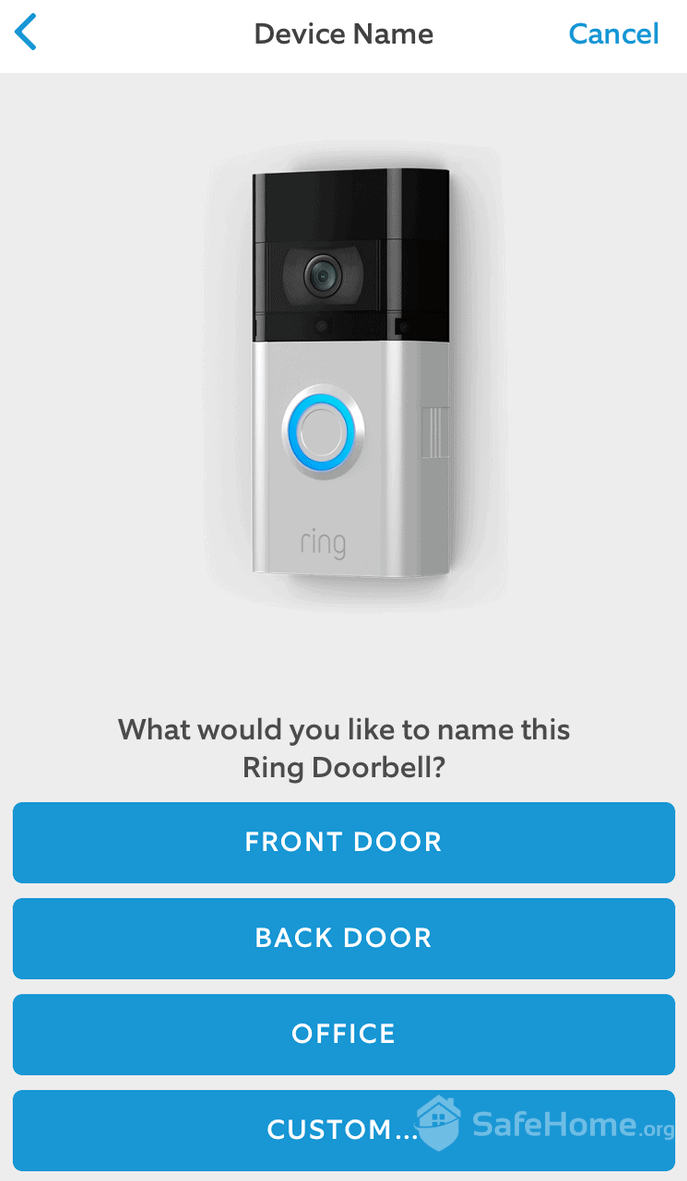
Ring Doorbell Setup
- Reliability: Ring is known for its reliable equipment. So you can trust that either model offered by the company will perform well and last a long time. We’re not just talking about hardware, either. Ring software is generally bug and glitch free, and that’s true for these two devices. If there’s one piece of equipment in your home that should work when you need it to, it’s your home security system.
- App-integrated: Both models are compatible with mobile devices. They can be monitored and operated from either Android or iOS platforms. This integration is extremely handy because it means you can manage, monitor, and control your Ring video doorbell from anywhere in your home or even remotely.
Did You Know? You can stream video from your doorbell no matter where you are as long as you have cell service. We’ve watched packages get delivered while we were on vacation hundreds of miles away.
- Night Vision: You get solid night vision capabilities with both of these cameras, something that’s crucial for home security, especially if you’re going to put them outdoors. The fact is, most break-ins happen at night, and if your camera doesn’t let you see what’s happening at night, you’re going to miss those porch pirates. We should point out that neither of these cameras offers night vision that’s as good as their daytime recording. That’s mostly because their daytime resolution is just that good. You can be sure that even at night, you can ID any potential home invaders.
- Motion Detection: Both the original Ring and the Plus model include built-in motion detection. That means the moment anyone steps foot on your property, the system goes into action. If you’ve signed up for professional monitoring, someone at the monitoring center will contact you and/ or alert emergency personnel. As for the self-monitoring with video storage plan, you’ll get an alert so you can review footage and see what’s happening at your home. And even if you’re doing true self-monitoring for free, you’ll get an alert so you can pull up live footage and check things out.
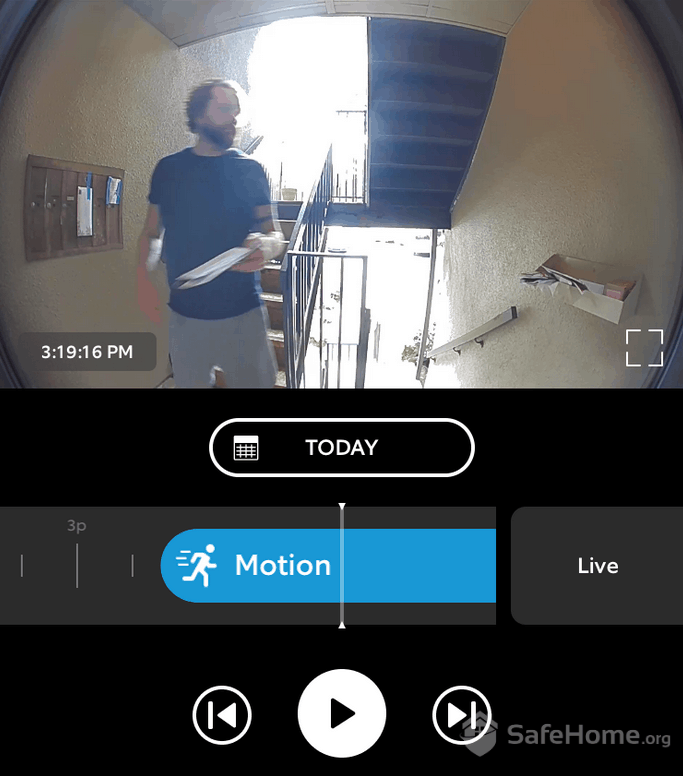
Ring Doorbell Motion Detection
- High-Quality Video: Both the Ring and Ring Plus video doorbells record high-quality videos that can be seen clearly, whether they have been recorded in the day or at night. A surveillance system with grainy video quality is nearly pointless since the whole idea is to capture the details of an incident or criminal. So both devices make the grade here.
- Field of View: The Ring Video Doorbell has a field of 155 degrees. Pretty good, when you consider the max is 180 degrees. The Ring Plus field of view isn’t exactly the same. The wired version offers 160 degrees. The battery-operated version offers 150 degrees. Those are both similar enough to the Ring Video Doorbell’s field of view to call this a similarity rather than a difference.
- Two-Way Communication: Another similarity between Ring and Ring Plus is that both models have two-way communication capabilities. Ring’s two-way communication (also called two-way talk) allowed us to speak with visitors at our door using nothing but our smartphone. To be honest, most doorbell cameras include this feature these days, but we still find it pretty cool to be able to tell the FedEx guy where to put our package.
- Reasonably Priced: Yes, the Ring doorbell is less expensive than the Ring Plus, especially if you’re buying the wired version. The bottom line, though, is that both doorbell models are reasonably priced, no matter which version you purchase. In an age when home security is necessary to protect your family, we appreciate the fact that Ring keeps prices down for these crucial devices. Plus, you don’t have to purchase a monitoring plan, so if you don’t mind monitoring your own home, you can buy a doorbell and pay nothing more, ever.
- Choice of Models: Just what you need when you’re having trouble deciding between two different cameras – more choice. Still, one of the nice things about both the Ring and the Ring Plus is that you can get them in wired or wireless models. So, you know, you can pick the one that’s going to work best with your home setup. Options are always a good thing.
- No local recording: Almost any camera on the market gives you the ability to view live video. There’s no doubt that’s an important feature. If you happen to catch a thief in the act, though, you’re gonna want footage to share with local authorities. All Ring cameras let you store footage, including these two doorbell cameras, but cloud storage requires a monthly subscription. Fees are reasonable, but there are cameras out there that offer local storage options. For example, with Lorex you pay no monthly fees, ever, and you can record as much as you like.
Did You Know? Ring does offer a paid cloud storage plan at only $3.99 per month. This gives you 180 days of video history and image capture, download, and video sharing capabilities.
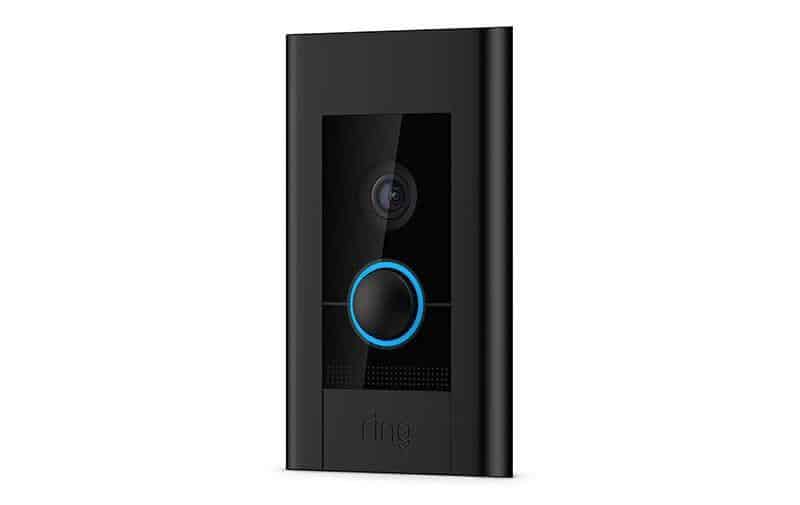
Ring Doorbell Pro
Differences Between Ring and Ring Plus
As we said above, there are plenty of similarities between these two pieces of equipment, but there are some notable differences. Here’s what you can expect to find when you put both of these doorbells side by side:
- Size: The Ring Plus video doorbell has a slightly smaller build than the Ring video doorbell. This is simply a design choice and has little-to-no bearing on function. You should always to measure carefully before you install a doorbell, to make sure that the model you choose will fit in the space. Ultimately, though, the size difference between these two isn’t much. Stylistically, we prefer the Ring Plus’s smaller profile. In fact, if we’re honest, there are even smaller options out there on the market that we like better.
- Cost: As we’ve already mentioned, the Ring Plus video doorbell model is more expensive than the Ring doorbell video model. We cover the cost difference in more detail below. But we will say this — both doorbell cams are worth the money, but you just get more functionality and better connectivity with the Ring Plus.
- Lighting: When using its night vision feature, the Ring Plus video doorbell uses LED lighting for a better image. The standard Ring video doorbell does not have LED lights built in. With this in mind, we prefer the Ring Plus when it comes to busting burglars in the night or preventing a home invasion from occurring. And we must say, Ring does lighting right. Check out our full review of the Ring Spotlight Cam and our Floodlight Cam review to see what we mean.
- Motion Sensor: We found that the Ring Plus video doorbell model has a more reliable motion sensor when compared to the standard model. And in our research we found that there have been a few, but not many, reports of lagging or failure to recognize motion.
- Alerts: The Ring Plus video doorbell gives you the option to customize the alerts that you will receive from the device. The Ring video doorbell does offer instant alerts, but you cannot customize the alerts to your liking.
Pro Tip: With custom alerts, you can really dial-in the notifications that are sent to your phone. However, both Ring models allow you to disable notifications altogether.
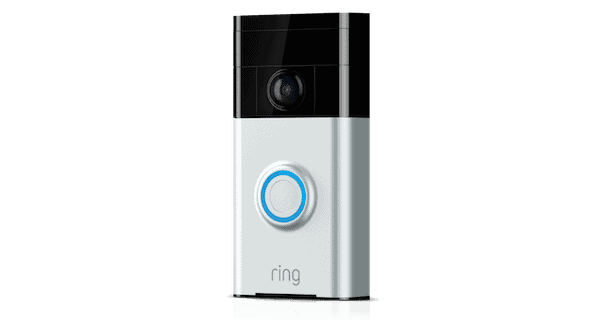
Ring Video Doorbell
Ring vs Ring Plus: Cost Breakdown
When you’re choosing a video doorbell, you should always make sure that you find the right product for your budget. The wired Ring Video Doorbell (2nd Gen) is the most affordable battery-powered doorbell from Ring. It costs just $49.99 in its most basic configuration. Or, you can spend an extra $50 and upgrade to the wireless version. The Ring Video Doorbell Plus, on the other hand, is slightly more expensive. Both versions cost $149.99.
Of course, there’s a reason the Ring Plus is a bit more expensive. It’s slimmer, with a more streamlined profile; it comes with color night vision, and you can get a variety of faceplate designs to match your front porch decor. In addition, you get dual-band Wi-fi. That means you can connect the camera to your 5GHz network and get faster streaming. You get all those additional features, but you pay just $40 extra.
You may want to think beyond the price of devices themselves. You can, of course, self-monitor for free. You get instant alerts that allow you to check live-feeds and respond as needed. If you want to record footage, for later playback to, say, the police, you’ll need to purchase a Ring Protect plan. A single camera costs $4.99 a month, or you can record footage from multiple cameras for $10 a month.
We recommend signing up for a 24/7 professional monitoring plan. With one of these plans, you can be sure someone is watching your house day and night, and you don’t have to do it yourself. Ring offers these plans for $20 a month, $18 if you pay for a year up-front.
We should point out that you’ll pay these costs no matter which Ring doorbell you buy. They could play a role, though, in which video doorbell you choose.
Below are the latest costs of Ring’s different doorbells, including the Ring Video Doorbell and Ring Plus. And if you want to explore these devices further, have a look at our Ring Doorbell pricing guide. We’ve broken things down by power source, and keep in mind that some of these models are on sale — we’ve included pricing information as well.
Ring Video Doorbell Breakdown
| Model | Retail Price |
|---|---|
| Video Doorbell Wired | $49.99 |
| Video Doorbell Wireless | $99.99 |
| Video Doorbell Plus Wired | $149.99 |
| Video Doorbell Plus Wireless | $149.99 |
Another great thing about Ring and Ring Plus video doorbells is that they are both designed for DIY installation. They’re really easy to install, especially if you choose the battery power option. More importantly, you won’t need to pay a technician to come to your house. That’s the advantage of modern, DIY security products: They’re inexpensive because there are no installation costs tied to them.
How They Work
Ring video doorbells can be powerful tools in your security arsenal. Keep in mind, though, that they aren’t complete home security systems. They only monitor one small portion of your property, your front porch. That’s an important place to monitor. Still, they can’t tell you if someone tries to raise a window in your house or decides to see if your back door is unlocked.
In addition, Ring video doorbells by themselves only watch your door; they can’t do anything about what they see. They’ll notify you if they spot suspicious activity, but you have to take action yourself. It’s up to you to pull up live-stream footage, evaluate the situation, and decide what to do. As we mentioned, you can invest in cloud storage so you can view saved footage. Or, you can invest in 24/7 professional monitoring for as little as $20 a month.
All Ring doorbell cameras work the same way, and based on our tests, just a Ring doorbell camera might not be enough to protect an entire home. I’d recommend looking at Ring’s security systems, the Ring Alarm and Ring Alarm Plus. In addition to protecting your home with sensors, Ring’s security system works in conjunction with Ring cameras. You can even have the security system professionally monitored, something you can’t do with a Ring video doorbell or security camera.
FYI: The Ring Alarm is a DIY home security kit that comes in packages that fit most home sizes. Expect to pay around $200 for equipment if you live in a smaller home, and upwards of $500 if you live in a larger home (still, this is a relatively affordable system). Also, the Ring Doorbells seamlessly integrate into the system. You can read more about Ring’s plans and packages here.
Do Your Homework
When it comes to protecting your home and keeping yourself informed, you should never settle for less than the best. That is why you should always have clear expectations in mind about what exactly you want your surveillance system to accomplish. There are so many options out there with a lot of different features to sort through. Just be sure that you install and set up your system correctly so that there is no room for avoidable failure.
Are Video Doorbells Worth the Cost?
I definitely think so. Being able to see what’s on the other side of the door makes most homeowners with video doorbells feel considerably safer. Video doorbells are also excellent at detering would-be loiterers. And if you’ve got any four-legged intruders in the neighborhood, with a video doorbell like the Ring, you’ve got “proof of poop.”
Finally, video doorbells are getting more advanced by the year. The latest model Ring video or Ring Plus video doorbells know when you’ve got an Amazon delivery, so you can snatch it up before the porch pirates.
In short, a video doorbell is a great way to improve the security of your home, whether as a stand-alone device or as an addition to a pre-existing security system. Ring has user-friendly equipment and interfaces that can be easily installed and integrated. This comparison should have you well on your way to choosing which of the two Ring models is right for you.
Ring Doorbell vs Ring Plus: So Which is Better?
If you can afford it at $149, we recommend going with the Ring Plus. We like the slightly better field of view, the hardwired connection (it’s simply more reliable), the improved night vision with built-in LEDs, and the smaller build. Overall, it’s just a better product with great features.
That said, if you’re restricted by budget, the $99.99 Wired Ring Video Doorbell is a hardy device, and at $49.99 Ring Video Doorbell is definitely better than nothing. In fact, we’ve used the Ring (2nd Gen) for a while with few problems. So keep it in your back pocket as an option! Either way, Ring offers a 30-day money-back guarantee on their products, so this should take the edge off your purchase, allowing you to find the doorbell cam that’s right for you and your household.
But if you’re still looking for something with a little more functionality, have a look at our guide to the best doorbell cameras on the market.
